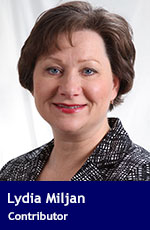 This fall, British Columbians will vote on what system they prefer for provincial elections. But far too much uncertainty surrounds all the potential choices.
This fall, British Columbians will vote on what system they prefer for provincial elections. But far too much uncertainty surrounds all the potential choices.
The mail-in referendum ballot will give voters two choices: B.C.’s current first-past-the-post system or proportional representation. A secondary question will ask: If adopted, what type of proportional representation system would you prefer?
There are proponents on both sides. On July 1, the campaign began with an official ‘Yes’ side and an official “No’ side (each receiving $500,000 from the province) that will attempt to persuade British Columbians.
Many proponents of electoral reform claim that the referendum is a simple process with straightforward reform options.
But while the referendum questions may be easy to answer, the process of designing a new electoral system will be neither simple nor straightforward.
If proportional representation (or PR) garners more than 50 per cent of the vote, the second question, which asks voters to choose one of three possible PR systems, will be used by the legislature as a guide to design a PR system. Voters will not select a specific PR alternative, but rather a general direction with politicians (and bureaucrats) filling in the details.
The three PR reform options include dual member proportional (DMP), mixed member proportional (MMP) and rural-urban proportional (RUP). Of these three options, only one – MMP – has been used. This makes the lack of details at the time of voting even more concerning. And it gives politicians and bureaucrats exclusive power in designing a system without proper public consultation and approval.
Clearly, the B.C. public needs more information. To relay the potential consequences of these decisions, here’s a brief summary of the proposed electoral systems and their rules, which can influence voting results and the composition of B.C.’s legislature.
Dual member proportional (DMP)
Under DMP, B.C.’s electoral map will be redrawn. Several constituencies will be amalgamated into two-member districts, although some large rural ridings will remain unchanged. Decisions on redistricting will be made post-referendum. In this system, parties will be able to nominate up to two candidates per electoral district in the dual ridings. Voters cast a single vote for a pair of candidates.
Seats are allocated in three ways to give an overall result that is ‘proportional’ provincewide. First, the total number of seats won by a party is based on the provincial popular vote. Second, the number of first district seats each party wins is subtracted from the total, which provides the number of second district seats. Third, the second district seats are allocated based on the performance in each district.
While voters will have a theoretical notion of how this system works, there are no international examples to inform voters. Numerous decisions on the system’s use and proportionality will be made after the vote. Unknowns include the total number of MLAs, the ballot design, the threshold for a party to be eligible to receive a second seat in any district and the electoral formula to determine the reallocations.
This electoral system is largely theoretical with many ambiguous characteristics.
Mixed member proportional (MMP)
Mixed electoral systems use both PR and majoritarian (like our current first-past-the-post system) electoral rules to translate votes into seats. Often a certain proportion of seats in the legislature is awarded using plurality electoral rules, while the remaining seats are awarded using PR.
Four major democracies use this system: New Zealand, Bolivia, Germany and Mexico. Each of these countries have large legislatures. Germany has 598 seats with half allocated by electorate vote and the other half by party vote. In Mexico, there are 500 seats with 300 allocated by electorate vote and 200 by party vote.
For B.C., the MMP model recommended by Attorney General David Eby argues for our current first-past-the-post (FPTP) system to allocate 60 per cent of the legislature. Eby further recommends that 40 per cent be “elected directly or allocated from the parties’ lists of candidates to compensate for any disproportional results for the FPTP vote.”
Voters will not know before the referendum the number of MLAs in the province under this system, whether the lists will be open or closed, whether voters will have one vote or two (one for the candidate and one for list), whether candidates can be placed on the party list and the local constituency, whether there will be a fixed number of seats or overhang seats calculated after the vote, whether the order of candidates on the list will be randomized and the method for filling single-member districts and list PR seat vacancies.
While this system is used in several countries comparable to Canada, there are many influential details of the system yet to be determined.
Rural-urban proportional (RUP)
RUP uses a single transferable vote (STV) in urban and semi-urban areas and mixed member proportional (MMP) in rural areas. This system is said to provide less regional proportionality but better local representation in rural areas. It also gives independent and smaller parties a relatively higher chance of being elected. However, it’s the most complicated of the proposed systems because two voting systems run simultaneously.
RUP has similar unknowns as the two systems outlined above, including the number and size of the electoral districts, the ratio of FPTP seats to list PR seats in MMP regions, the ballot options for the list PR vote (such as open or closed), how many votes voters have, and the method for filling STV and list PR seats.
All these unknowns could have potentially profound impacts on the outcome of any election. For example, the issue of open versus closed lists impacts whether women and visible minorities have better representation, and the link between the MLA and the constituency. The closed list system is said to weaken this relationship because party elites decide who is on the list and its order. Voters only select the party they prefer – not the candidate.
Individuals are elected based on their position on the list, which is determined by the party. This gives more power to the party elite than the party membership. As a result, voters will not be able to hold closed list candidates to the same degree of accountability as those elected in regional seats. For the open party list, voters can vote for their preferred candidate and their preferred political party.
Other decisions regarding electoral boundaries and constituency size will also have a profound impact on future election outcomes. Clearly, given the scant information provided to the public, B.C. voters will not know what voting system they will adopt, even if the referendum in the fall produces a consensus.
Instead, a vote for any of these electoral systems risks empowering politicians to make discretionary decisions regarding election rules that could directly benefit them and their party – but not necessarily democracy.
Lydia Miljan is an associate professor of political science at the University of Windsor and a senior fellow at the Fraser Institute who has studied electoral systems worldwide.
The views, opinions and positions expressed by columnists and contributors are the author’s alone. They do not inherently or expressly reflect the views, opinions and/or positions of our publication.

